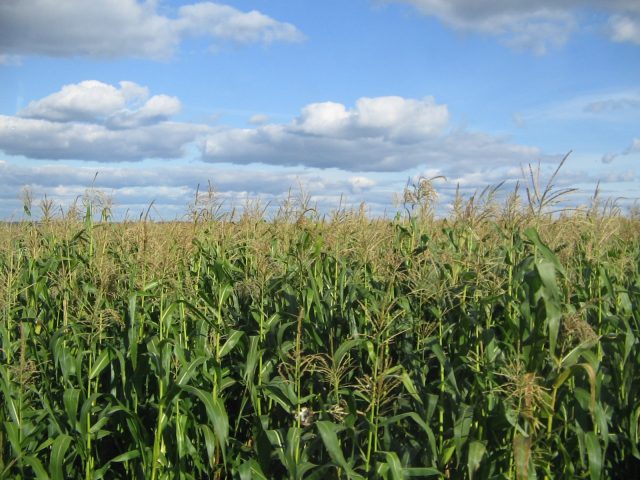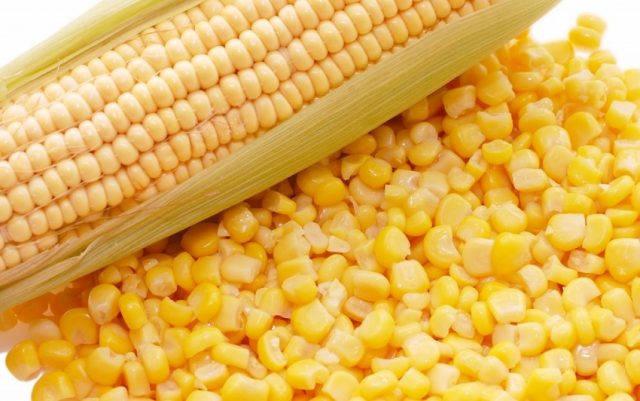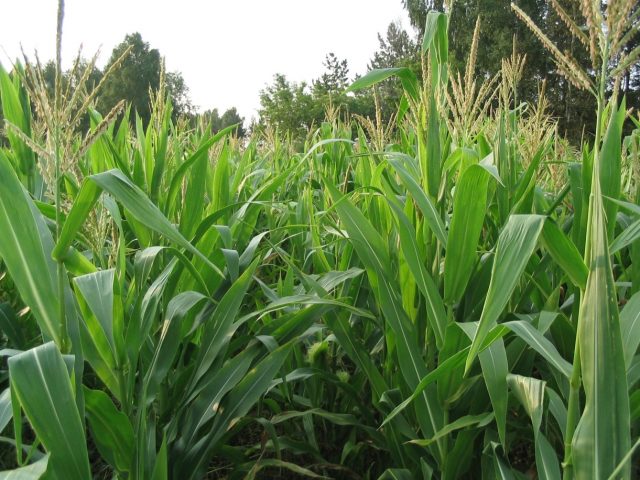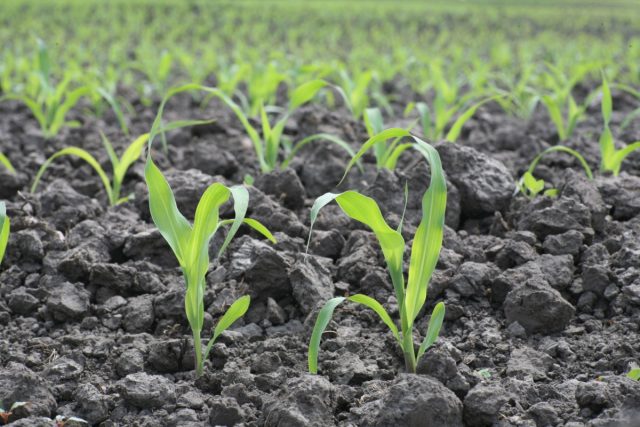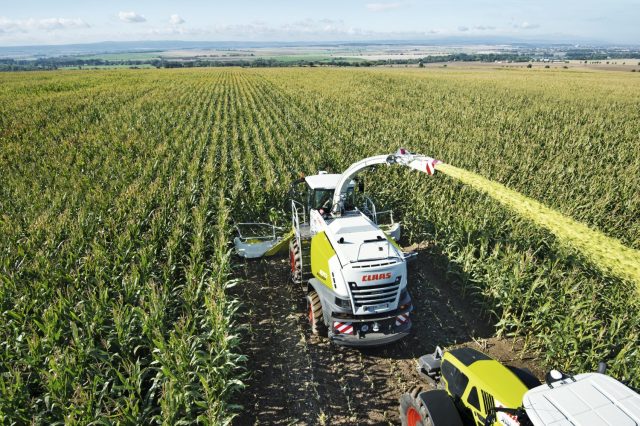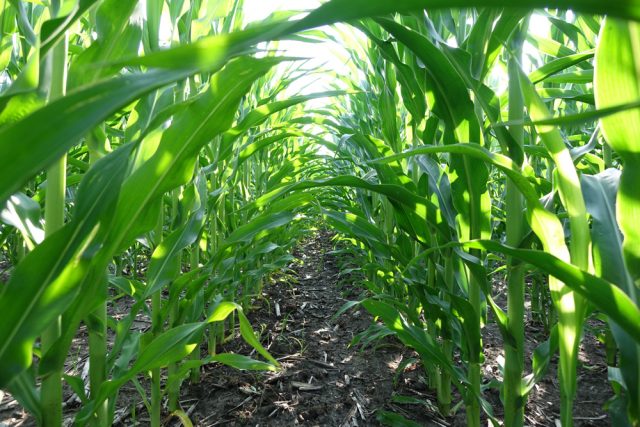Content
- 1 What is corn silage
- 2 The best predecessors for silage corn
- 3 Choosing a variety of corn for silage
- 4 Timing of planting corn for silage
- 5 Preparing seeds for planting
- 6 Soil preparation
- 7 Planting density of corn for silage
- 8 Sowing rules for silage corn
- 9 How to care for corn crops
- 10 Harvest
- 11 Storing corn silage
- 12 Conclusion
Silage corn provides feed for farm animals. The cultivation process includes a number of stages: soil preparation, variety selection, seedling care. After harvest, it is important to ensure that the produce is stored correctly.
What is corn silage
Corn is an annual plant that forms large cobs. One of the options for using the crop is to obtain silage. This is the name for juicy food for animals and birds. Corn silage has a positive effect on the milk production of cows and contributes to the growth of muscle mass in cattle.
Silage of corn involves chopping up the plants. Then the resulting mass is preserved without air access. Silage is distinguished by its nutritious properties and high vitamin content. The product aids digestion and assists in the absorption of other feeds. Silage is stored in special pits or trenches.
Various factors affect the quality of corn silage:
- landing dates;
- sowing rate for a certain area;
- the use of herbicides;
- dimensions after shredding;
- starch and fiber content.
The best predecessors for silage corn
Before planting your corn, it is important to choose the right spot for it. Pay attention to the crops that grew on the site. The best predecessors for corn are potatoes, cabbage, zucchini, beets, tomatoes, and cucumbers.
Advice! Poor precursors for corn are millet, sorghum, sugar beets, and sunflowers. These plants share common diseases and drain the soil significantly.
It is allowed to plant corn on one site for several years in a row. However, such actions lead to depletion of the soil. Therefore, the fields provide constant irrigation and the supply of minerals. It is best to change the place where the crop is grown. Re-planting is possible in 2 - 3 years.
Choosing a variety of corn for silage
For planting, choose varieties that ripen well and contain a maximum of dry matter. Breeders have developed hydrides, which are designed to produce silage. Planting of universal varieties is allowed. For the middle lane, early maturing and mid-early corn are best suited. In more northern regions, only early hybrids are planted.
The best varieties for silage cultivation:
- Voronezh 158 SV. The hybrid is used in the Central region, the Volga region and Siberia. Ripens early. The plant is tall, forms cobs of medium length. The yield of corn for silage is up to 73 kg / ha. The variety is resistant to fungal diseases;
- Voronezh 230 SV. Medium-early ripening hybrid, recommended for planting in the middle lane. The cobs are medium in size, the grains are of an intermediate type. Maximum yield - 87 c / ha;
- Cascade 195 SV. Early ripening corn, recommended for the Volga and Chernozem regions. Plants are tall, form cobs of medium size. The crop is harvested early;
- Baxita. The hybrid is recommended for cultivation in the North-West, in the Black Earth Region, the Volga Region, and Western Siberia. Ripening occurs early. Plant of medium height with short ears. Best of all, the variety shows its properties in the Perm Territory, Lipetsk and Kaliningrad regions.
Timing of planting corn for silage
Corn is planted in spring when the soil warms up well. The optimum temperature at a depth of 10 cm is + 12 ° C. If the variety is cold-resistant, then an earlier planting is allowed when the temperature indicator reaches +8 ° C. This is usually the period from May to mid-June.
Spring cold snaps do not affect seedlings if the germination point is preserved. If corn is planted later, there is a high risk of lower yields.
Preparing seeds for planting
To improve the germination of corn, its seeds are processed. Typically, this procedure is performed in factories. As a result, the planting material meets the requirements established by the standard.
First, the seeds are dried until the moisture value reaches 12%. Then select healthy material without spots and other defects. The next stage is etching in a solution of potassium permanganate or other drug. Its purpose is to disinfect seeds, eliminate pathogens and insect larvae.
Seeds for silage are warmed up in the sun for 3 - 4 days. At night, they are covered with a tarp or put away in a dry room. Immediately before planting, corn is soaked in water for 12 hours. Such material sprouts faster.
Soil preparation
For maize for silage, fertile soil is used, which is good for moisture and air. Sandy loam, loamy soils, peat bogs are suitable. Soil preparation begins in the fall. The site is dug up and cleaned of weeds... Rotted manure must be brought in.
Advice! Instead of natural fertilizers, mineral complexes containing nitrogen, phosphorus and potassium are also used.
If the earth is clay, then in the spring it is loosened. Sawdust or straw is additionally introduced. In the fields, pre-sowing treatment is carried out using cultivators with rollers or harrows.
Planting density of corn for silage
Corn is planted on silage in rows. A distance of 70 cm is left between them. The seed consumption rate is 60 thousand per 1 hectare. On average, the specified area requires 15 to 30 kg of seeds.
The planting scheme depends on how much the soil is provided with moisture. It is allowed to reduce the distance between rows with corn. In this case, leave 50 - 70 cm between the plants.
Sowing rules for silage corn
Corn seeds for silage are planted to a depth of 3 to 8 cm, in heavy soil - by 5 cm, in sandy - by 8 cm. The planting depth is chosen depending on climatic conditions and humidity in the upper soil layer.
In the fields, pneumatic seeders are used for planting. When the unit starts up, the fan is activated. As a result, air is forced into the seed unit and the spreading disc begins to rotate. The seeds are fed through special holes. The seed drill also creates furrows.
How to care for corn crops
Silage corn care includes watering, fertilizing, protection from weeds, diseases and pests. At the beginning of the growing season, plantings rarely suffer from a lack of moisture. Until the period when the intensive development of the stem begins, the corn does not need watering. At this time, the accumulation of dry substances occurs.
If the region receives less than 80 mm of precipitation, then additional irrigation is required. The culture does not tolerate excess moisture in the soil. When the humidity rises, the growth of the plant stops, and its leaves turn purple.
The watering rate per plant is from 1 to 2 liters of water. After applying moisture, it is recommended to loosen the soil. With a lack of oxygen, the development of the ears deteriorates.
Fertilizers
Minerals have a positive effect on the growth of corn. Plants develop slowly at first. The root system is not yet strong enough to use the fertilizers applied in the fall. When growing for silage, it is important to provide the corn with nutrients. They are necessary for the formation of the stem.
To obtain high-quality silage, plantings are fed according to the following scheme:
- when the third leaf is formed, slurry is introduced;
- for subsequent treatments, a mineral solution is prepared: 20 g of ammonium nitrate, 15 g of potassium salt and 30 g of superphosphate per 10 liters of water.
Additionally, the plants are sprayed with a solution of zinc sulfate. 400 g of water requires 300 g of fertilizer. This amount is sufficient to treat 1 hectare.
Herbicides
Weeds cause reduced yields, diseases and pests. To combat them, special preparations are used - herbicides Erodican, Aurorex, Reglon. For 1 hectare of soil, up to 10 liters of substance are required. They are embedded in the soil before planting corn for silage.
When shoots appear, the herbicides Adengo, Burbin, Louvard are used. Consumption is 2 liters per hectare. An interval of 2 months is made between treatments.
Pest and disease control
Silage maize can be severely affected by diseases and pests. The culture suffers from powdery mildew, blister smut, fusarium, rust. When signs of disease appear, treatments are performed with Optimo or Privent. Against the meadow moth, juices and oat flies, Fors or Karate insecticides are used.
Harvest
Maize is harvested for silage when the grains reach milky-wax maturity. When pressed on the cobs, a thick mass and a whitish liquid are released. Plants are mowed using a special technique. First, the cobs are harvested, and then they proceed to the stems. They are cut at a height of 15 cm from the soil surface.
Storing corn silage
The crushed corn cobs in the silage are kept in special silos or trenches. The mass is laid in layers 80 cm thick. Phytoncides must be added, which do not allow the release of butyric acid. They act as a disinfectant and ensure the fermentation of the silage.
After laying, the silo is covered with two layers of foil. A weight is placed on top to squeeze out air. The minimum fermentation period is 3 weeks. The finished silage is removed in 30 cm layers.
Conclusion
Silage corn is a valuable product that is used in animal husbandry. It is grown on prepared soils. During the growing season, plantings are provided with care: feeding, protection from pests and diseases.
